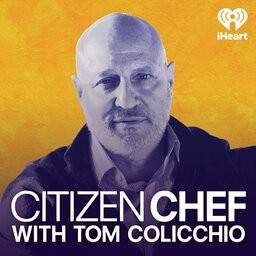A Small Step Towards Ending Hunger (Not Just Managing It)
Tom and Food Research and Action Center Ellen Vollinger and Massachusetts Congressman Jim McGovern discuss the historic permanent increase to the decades-old Thrifty Food Plan coming in October 2021.
Follow Tom on Twitter and Instagram @tomcolicchio and share what you want to hear with hashtag #CitizenChef.
Learn more about your ad-choices at https://www.iheartpodcastnetwork.com
 Citizen Chef with Tom Colicchio
Citizen Chef with Tom Colicchio


